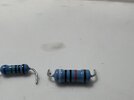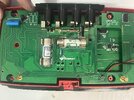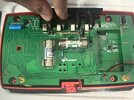michael6204
New Member
Have a question. I’m repairing a snap on multimeter that had too much DC voltage go through it and now I can’t measure dc voltage with that meter. After doing some testing I’ve found 2 resistors are dropping voltage without even having current flow. I removed and tested them and their resistance is correct but they shouldn’t drop voltage without current so I’m sure they are faulty. Everything else that I’ve tested seems to be okay. Any other likely faults? Also I can’t find replacements anywhere that are an exact match 10M .25% and 900k 1% any advice?
Attachments
Last edited:



